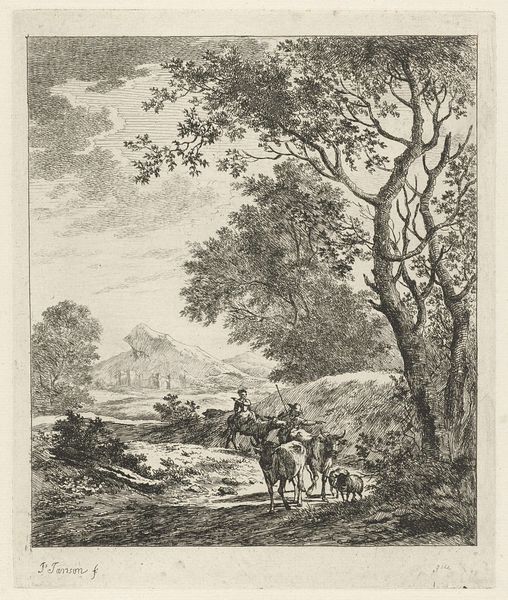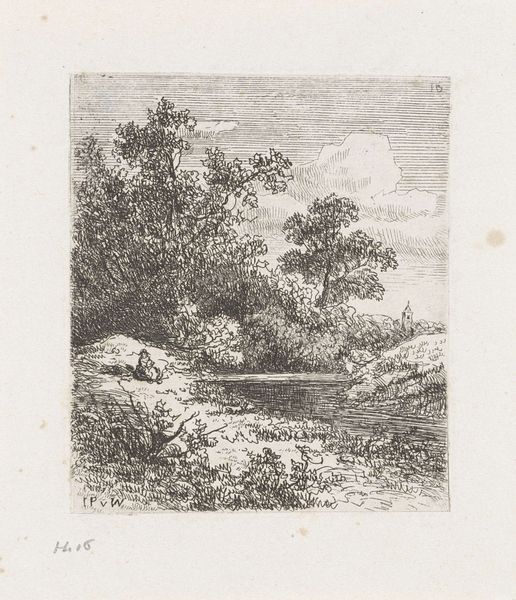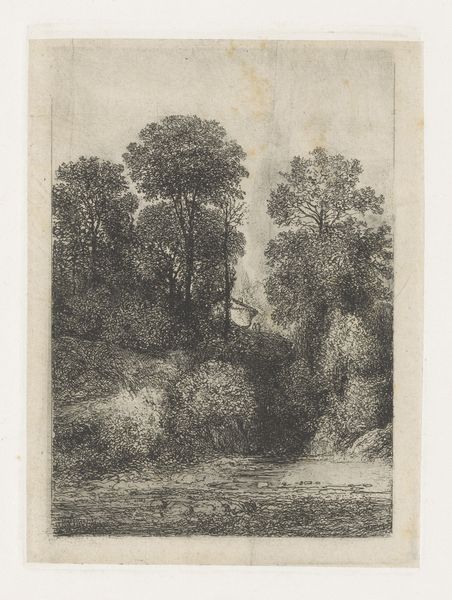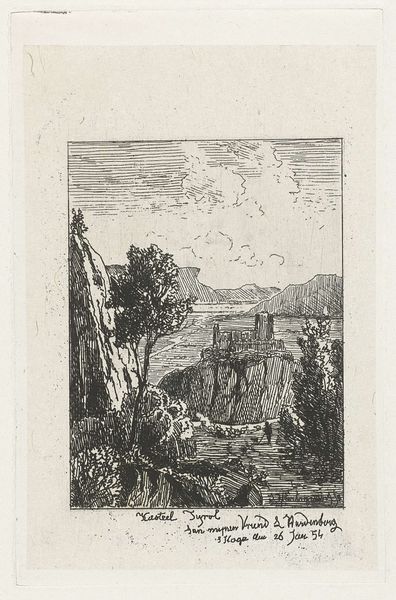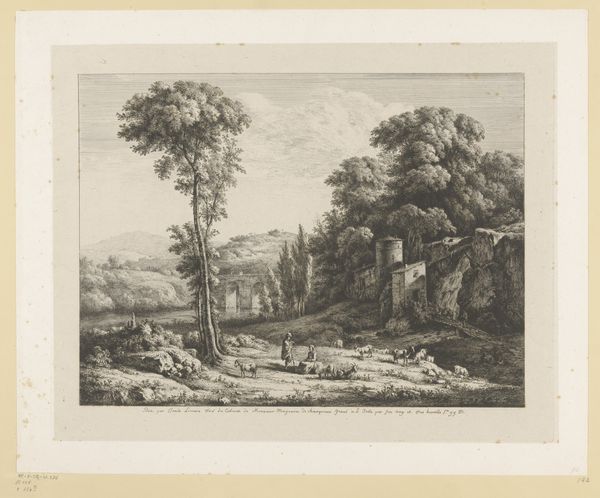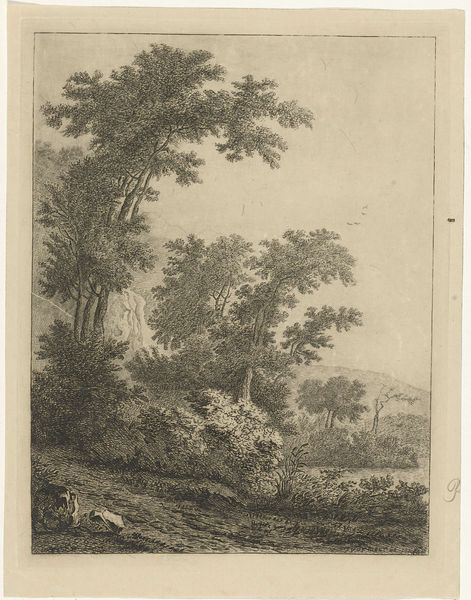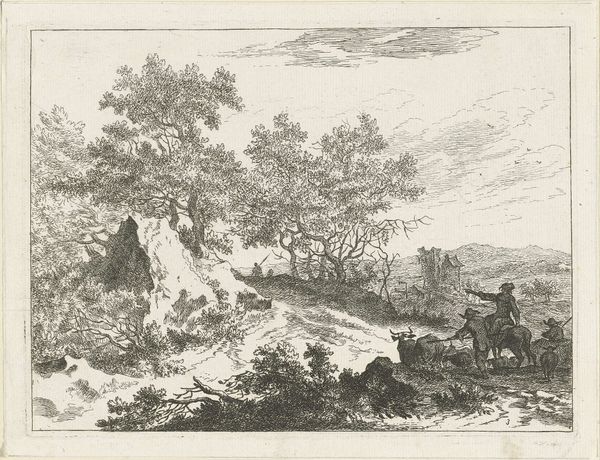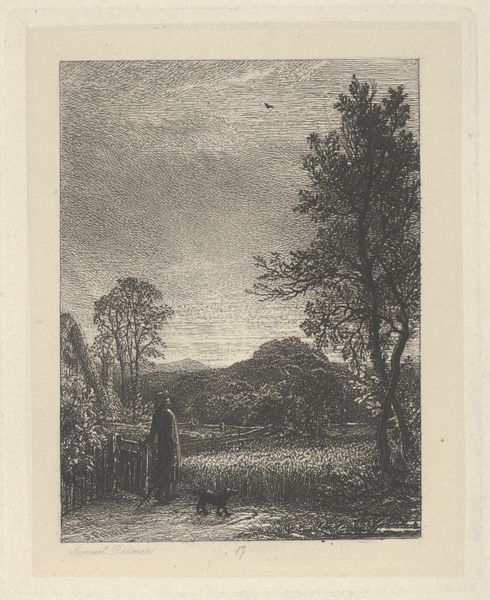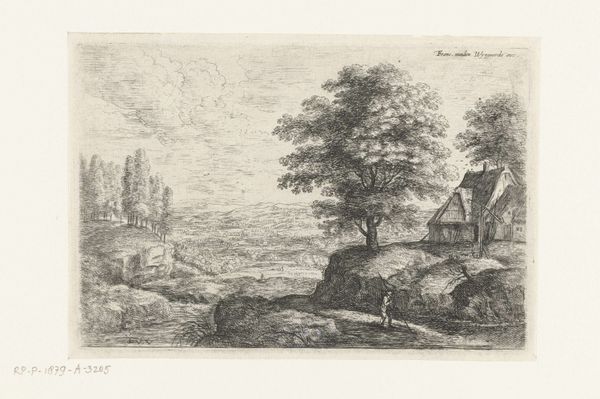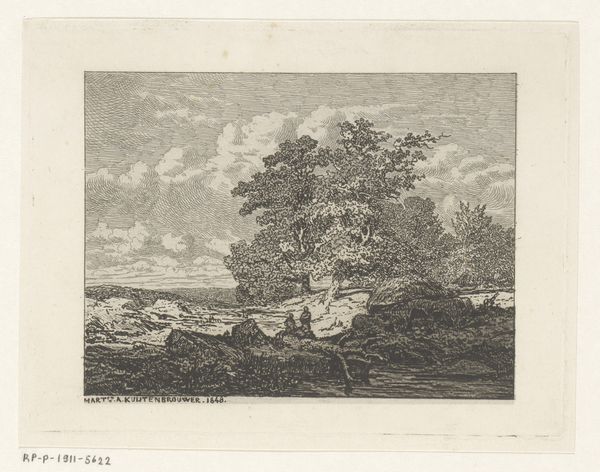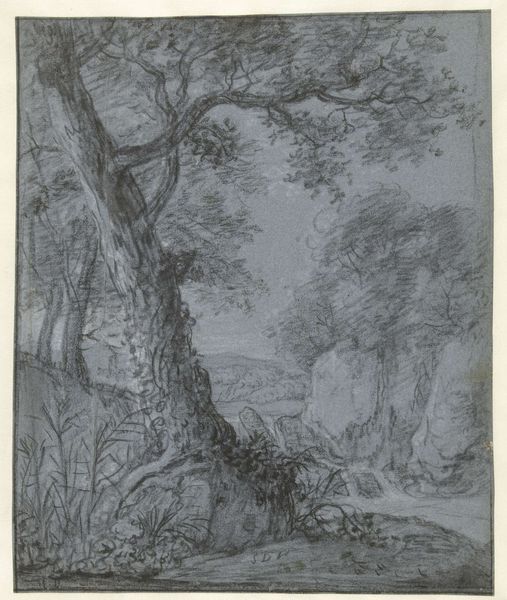
Twee schapen en een geit in een heuvellandschap 1795 - 1873
0:00
0:00
ignatiusjosephusvanregemorter
Rijksmuseum
drawing, etching, plein-air
#
drawing
#
etching
#
plein-air
#
landscape
#
romanticism
#
watercolor
Dimensions: height 134 mm, width 104 mm
Copyright: Rijks Museum: Open Domain
Curator: Let's talk about this drawing and etching by Ignatius Josephus Van Regemorter. It's titled "Two Sheep and a Goat in a Hilly Landscape," and was created sometime between 1795 and 1873. It seems almost deliberately understated. What are your initial thoughts? Editor: I'm immediately struck by the stark contrast in tones. The way the light hits those animals creates an interesting visual tension. And you can almost feel the texture, especially on their fleeces. Curator: Absolutely. Consider the socio-economic backdrop of agricultural life at the time, a tension emerges between romanticized rural ideals and the material realities of farming that likely shaped Van Regemorter’s choice of subject matter. It speaks to representations of rural life and perhaps anxieties about social hierarchies. Editor: And looking closer at those techniques...etching for the detailed areas, maybe? You can see how the layering creates that lovely depth of field. How interesting to render the texture of wool through essentially industrial printing methods. There’s an engagement here between industry and the animal economy. Curator: I agree. Beyond that materiality and the productive tension within the methods used to render this landscape, notice how this imagery often appears during periods of upheaval. Animals representing vulnerability and peace while veiled class structures are upended, all amidst rising industrial labor practices... what statements can you perceive here? Editor: That contrast is heightened by the setting. The backdrop looks pretty wild—like, how much labour would it even take to tend this land and make any money out of this, right? You know, it raises questions about ownership, cultivation and the natural limits and opportunities present here. Curator: It's interesting you pinpoint that visual juxtaposition. Ultimately, it urges reflection on not just rural realities, but potentially challenges comfortable presumptions we might bring when engaging pastoral imagery during a time that was rife with change and instability. Editor: Well, from considering labour in agriculture to seeing those techniques mirrored now, it seems even pastoral images have something relevant to show. Curator: Precisely, reminding us art's relationship to history mirrors present conversations too.
Comments
No comments
Be the first to comment and join the conversation on the ultimate creative platform.
